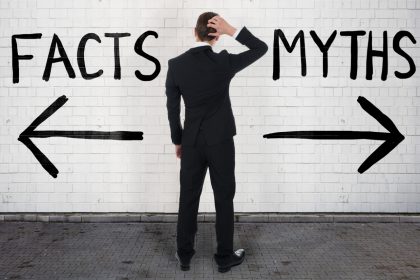1. If I publish in two or more different file formats (e.g. epub, PDF) should I assign separate ISBNs?
Yes. Each different format of an electronic publication that is published and made separately available should be given a separate ISBN.
2. Should different versions of the e-book that use the same file format (e.g. epub) have different ISBNs?
If the different versions use the same DRM software (e.g. Adobe ACS4) with substantially the same settings and are interoperable on different devices or software, then a single ISBN should be used. If, however, the same DRM software is used on two versions but with significantly different settings (e.g. one allows printing but the other does not) then each version should have its own separate ISBNs.
If proprietary DRM is used that ties a version to a specific platform, device or software then, if ISBNs are assigned (see 6 below), separate ISBNs should be used for each such version.
3. Assuming the same content, what are the features that distinguish different e-book products and determine whether separate ISBNs are required?
The key features are whether any specific device or software is required to read the e-book and what user functionality is provided (e.g. copy, print, lend etc.). As mentioned above, this is normally defined by a combination of file format and Digital Rights Management software.
4. Is there a standard way of describing different product forms and DRM features?
ONIX for Books is the international standard for representing and communicating book industry product information in electronic form. The latest release, 3.0, has improved handling of digital publications and provides structures for describing product form detail and DRM usage constraints. Even if you do not use ONIX, you can use the standard codes to describe product form and usage constraints listed in the relevant sections of code lists version 12 (DRM–related codes, lists 144-147; product content type, list 81; product form detail, list 175).
Further information on ONIX for Books 3.0 and code lists is available at https://editeur.org/93/Release-3.0-Downloads/.
5. If I provide a single master file to a conversion service and am not controlling the different combinations of file format and DRM provided by that service to retailers, should I assign an ISBN to that master file?
No, unless it is also being made available to the public in exactly the same form as your master file (i.e. unchanged file format and without DRM applied). You should assign separate ISBNs to each version generated by the conversion service (see also question 6 below). If your legacy computer system requires an ISBN to identify a master file, then this should be kept as a purely internal identifier to avoid the possibility of several different versions carrying the same ISBN.
6. If my e-books are being supplied by a retailer that is the sole provider of e-books in a proprietary format that can only be bought its own website (e.g. Amazon Kindle) and that retailer does not require ISBNs, should I assign ISBNs to those versions?
It is not necessary to do so, unless it is useful for your own purposes or you want that version to be listed in third-party databases of available e-books . However, since these platforms are generally not interoperable, if you do assign ISBNs, make sure that they are unique to each version to avoid problems if those versions should later become available through third parties.
7. I provide an e-book conversion service to publishers but they are not providing separate ISBNs for each version that I generate. What should I do?
If a publisher will not provide ISBNs to intermediaries for this purpose then, as a last resort, intermediaries may assign their own ISBNs. ISBN agencies will provide ISBN prefixes to intermediaries for this purpose. In this case ISBNs and related metadata should be provided back to the publisher and to the national ISBN agency and other bibliographic agencies.
Note that the assignment of an ISBN has no implications for rights ownership.
8. E-book devices offer different features such as type size, text to speech, bookmarking, colour etc. Even if my content, file format and DRM are the same, the user experience varies according to the device used. How does this affect assignment of ISBNs?
Not at all. If the content, file format, DRM and settings are unchanged, then any variation that depends on the device or software used to read the e-book does not impact on the ISBN.
Note that provision of mono or colour images in separate e-publications intended respectively for mono or colour devices constitutes a change of content – and therefore of ISBN. However if colour images only are provided, but a particular device has only a mono display, that is simply a device limitation and does not imply a second ISBN.
9. Should an enhanced e-book that includes audio, video or other additional content have a different ISBN from the standard e-book?
Yes. Since there is extra content included in the enhanced e-book it is clearly a different product and should therefore have a separate ISBN.
10. Can e-book “apps” (e.g. applications for iPhone, Android etc.) have ISBNs?
Yes, provided that there is significant textual content. An e-book app is simply a combination of textual and other content and software. If the software element is different (e.g. targeted on different operating systems), then each version should have a separate ISBN. However, please see question 6 above. If the app is only being made available through a single source, then ISBNs may not be necessary.
11. I am publishing two versions of an e-book, one without DRM and one with ‘social’ DRM that does not enforce any restrictions on the user (e.g. watermarking). Do I need two separate ISBNs?
No. If the social DRM does not enforce any restrictions or intrude significantly on the users’ experience, it is transparent to them and need not be given a separate ISBN.
12. How can all the different versions of an e-book be linked together?
The ISTC (International Standard Text Code) is a new ISO identifier that identifies the underlying textual content of the book and is therefore shared by all digital and physical manifestations of the same title. The assignment of ISTCs would facilitate the linking of all versions and, with the addition of a filtering element such as product form, could also be used to link all e-book versions. Some systems already use an internal work identifier to provide this functionality but this cannot be used in the supply chain.
Note that the implementation of ISTC also facilitates the“inheritance“ of metadata from work level to manifestation level and can save rekeying.
Further information on ISTC is available at http://www.istc-international.org
13. How do I identify individual chapters or other parts of a book that I plan to make available separately?
If you are making chapters or other parts of a book separately available through the normal supply chain and want to have them listed in trade databases then you should regard them as individual publications and assign ISBNs to them. If they will only be available through a single source, such as the publisher’s website, then proprietary internal identifiers will be adequate.








